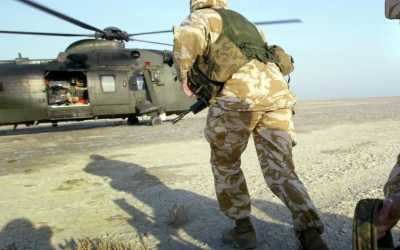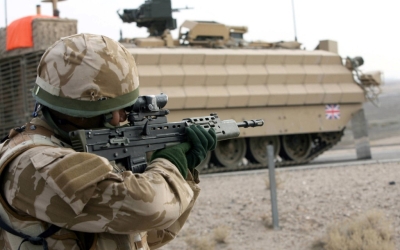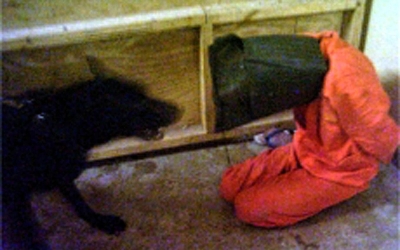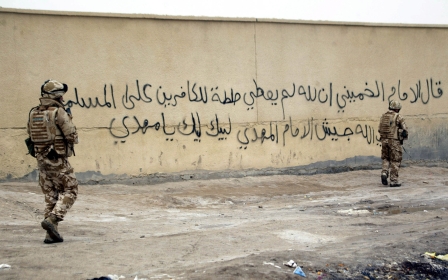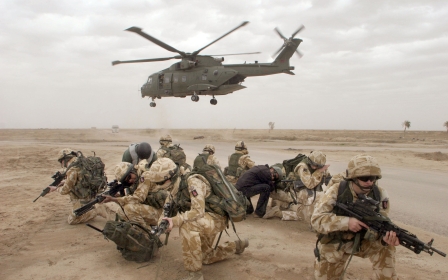UK and US forces ran secret desert prisons in Iraq after 2003 invasion
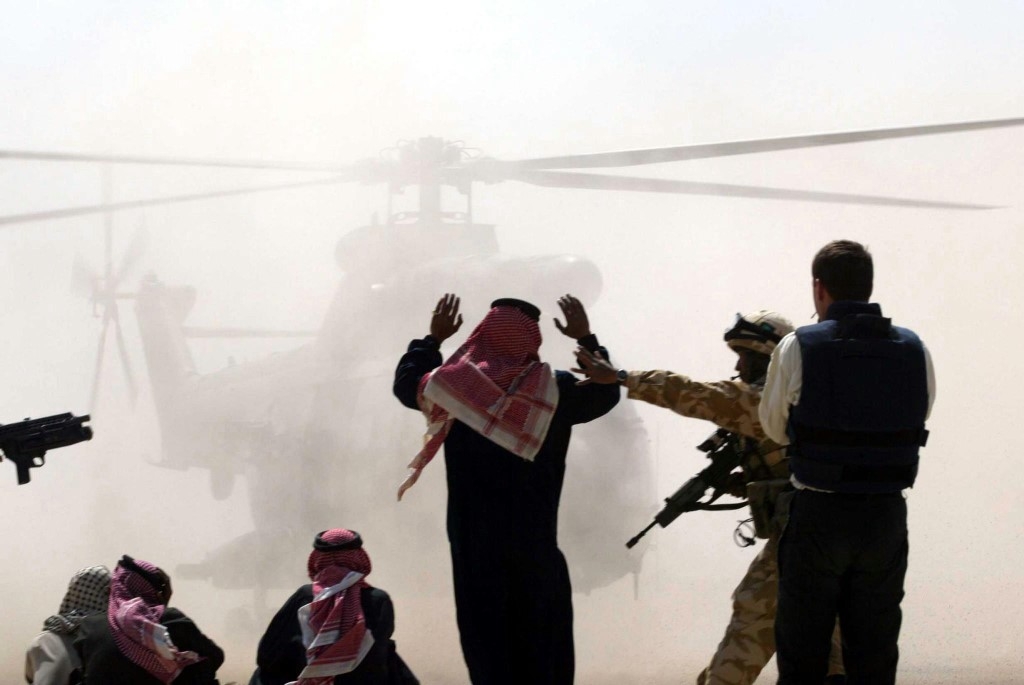
The US and British military ran at least two secret prisons in Iraq during the months following the 2003 invasion, concealing prisoners from Red Cross inspectors, Middle East Eye has learned.
The British army’s most senior legal advisor in the country at the time is understood to have made a criminal complaint to police when he discovered the existence of the so-called black sites.
He alleged that the prisoners may not have been notified to the Red Cross and may subsequently have been rendered out of the country.
The disclosure comes after a joint investigation by the BBC and Sunday Times newspaper concluded that the British government and senior army commanders covered up evidence that troops had been involved in murder and torture in both Iraq and Afghanistan.
After interviewing 11 former civilian police officers who investigated allegations of war crimes, the two news organisations reported that the UK’s Ministry of Defence (MoD) was determined that no prosecutions should be brought in order to protect the reputation of the country’s military.
One of the two secret prisons that were the subject of the military lawyer’s complaint was inside a joint US-UK forward operating base known as H1, located at an airfield and oil pipeline pumping station in Iraq’s Western Desert.
The second, outside the town of al-Qaim near the Syrian border, was known to coalition forces as Station 22.
Missing file
The existence of the detention facility at H1 came to light only when an anonymous call was made to a British Royal Air Force (RAF) base in June 2003, alleging that an Iraqi prisoner of war had been beaten to death aboard one of its aircraft while being taken to the prison.
Why was the British Army in Iraq and Afghanistan?
+ Show - HideThe UK sent forces to Afghanistan as part of the international coalition that invaded the country in 2001 following the 9/11 al-Qaeda attacks in the US, and to Iraq in 2003 as part of a US-led invasion to overthrow Saddam Hussein.
In both countries British soldiers became increasingly bogged down fighting against insurgents opposed to international occupation.
In Iraq, British forces were handed responsibility for security in Basra and three provinces in the south, but their presence was challenged by Muqtada al-Sadr’s Mahdi army militia fighters.
In September 2007, British forces withdrew from their bases in the city to the airport on the outskirts, the targets of “relentless attacks”, according to an International Crisis Group report which said that their retreat was viewed by locals as an “ignominious defeat”.
In Afghanistan, British forces had been deployed in 2006 to Helmand Province. But they proved ineffective against the resurgent Taliban and in 2009 more than 100 British soldiers were killed.
British troops eventually withdrew from Afghanistan in 2014, with 454 service personnel killed over the course of their 13-year campaign in the country.
An inquiry by RAF police faced a series of obstacles, and MEE understands that a file on the case at one point disappeared from the offices of RAF lawyers.
Subsequently, a judge-led inquiry published earlier this year established that the victim, who was named in the report as Tariq Sabri Mahmud, had been killed when he was restrained and thrown to the floor inside a Chinook helicopter. His body was promptly buried at H1.
Another prisoner lost consciousness during flight, and a third had his prosthetic legs removed.
These men were among 63 prisoners of war being flown to H1 for interrogation after being detained at a roadblock in western Iraq on 11 April 2003, by Australian and American special forces. It is unclear how many prisoners were detained at H1 in total or how long the detention facility remained in operation.
It is also unclear whether the prisoners were later transferred to the main coalition prisoner of war camp at Umm Qasr, south of Basra.
British army lawyers are understood to have sought information about the prisoners once the existence of the detention facility came to light, but without success.
Clarification on the whereabouts of the prisoners has not been provided to them by the British authorities despite numerous requests.
British government 'blocked inquiries'
A senior former army lawyer lodged a complaint with a policing panel, the Iraq Historic Allegations Team (IHAT), that was examining allegations of British war crimes.
The BBC and Sunday Times reported this week that 11 former IHAT investigators say nothing came of their inquiries because the British government and senior military commanders were determined that no soldiers would face prosecution.
The MoD refused to answer MEE’s questions about H1, would not disclose what happened to the prisoners, and declined to comment on the matter.
Up to 20,000 people were held at Umm Qasr during the years following the invasion.
The US also operated a number of other detention facilities. One, Abu Ghraib, became notorious following the disclosure of a number of photographs showing inmates being abused.
A lesser-known detention facility was run by the US at Balad, north of Baghdad, while another operated, with UK assistance, at Baghdad international airport.
A leaked Red Cross report later showed that its inspectors had grave concerns about the treatment of inmates at Abu Ghraib and had also complained about the mistreatment of some prisoners at Umm Qasr.
Earlier this year, MEE disclosed that the British army sent a small team of interrogators to Abu Ghraib at the height of the scandal over the torture of inmates.
This article is available in French on Middle East Eye French edition.
Middle East Eye propose une couverture et une analyse indépendantes et incomparables du Moyen-Orient, de l’Afrique du Nord et d’autres régions du monde. Pour en savoir plus sur la reprise de ce contenu et les frais qui s’appliquent, veuillez remplir ce formulaire [en anglais]. Pour en savoir plus sur MEE, cliquez ici [en anglais].


